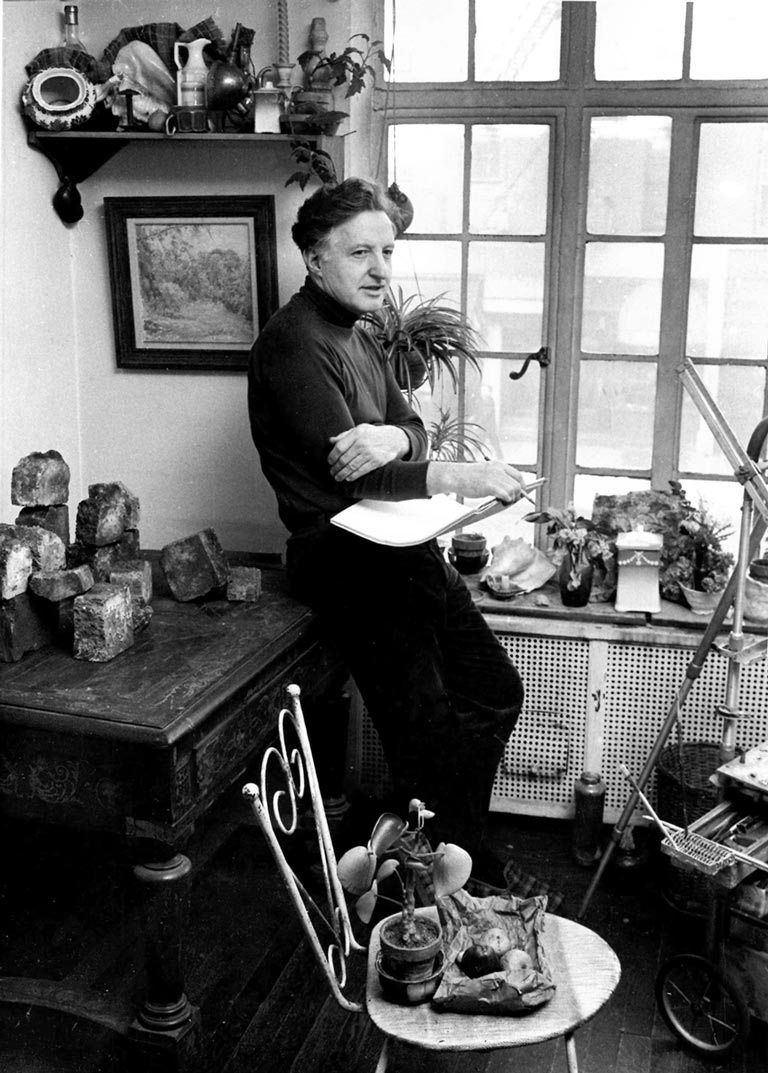
Herman Rose in the studioc. 1950s
Herman Rose
1909–2007
Herman Rose, an American, lyrical representational painter, was called ”the painter’s painter’s painter” (Gerrit Henry, 1984). in a review of Rose’s work in 1984. Born in Brooklyn, NY in 1909, Rose studied art at the National Academy of Design, 1927–1929, and at the local museums and the print room of the 42nd street library. During the Great Depression he worked in the Mural and Easel divisions of the Federal Works Project Administration in NYC (1934–39) under Arshile Gorky who, according to family lore, singled Herman out as a talented young painter.
In 1939, after experimenting with a variety of contemporary expressionistic styles, Rose boldly decided to paint from life. This new commitment was strengthened by what amounted to a religious experience. While painting near Budd Lake, NJ, “the beauty of the scene suddenly overwhelmed him. . . [and] he began to pray aloud” to nature (Lawrence Campbell, 1969). Working mostly in East New York and East Canarsie in Brooklyn, and in Manhattan, Rose began to paint roof tops and street scenes.
“Herman Rose is in my opinion the greatest living painter of landscape and still life in the United States.”
His major break came when Ms. Dorothy Miller of MOMA included him in the 1952 show, 15 Americans, along with Mark Rothko, Jackson Pollack and Clyfford Still. Over the course of his career, he had 22 solo shows and was included in 36 group shows at prestigious galleries such as ACA, Forum, Zabriskie and Fischbach.
In 1990 Rose was included in a group show, Stamens & Pistils, featuring Marc Chagall, Henri Fantin-Latour, Alberto Giacometti, Robert Maplethorpe, Henri Matisse, Edwin Dickinson, Georgia O’Keefe and Pablo Picasso at the Louis Stern Gallery in Beverly Hills, CA.
Herman Rose worked “against the great current of Modernism with its general rejection of the past and its insistence on continuous breaking of new ground” (Ralph Pomeroy, 1982). Despite this, he won a significant number of prestigious awards, grants, honors and widespread critical recognition. Hilton Kramer said that Rose’s watercolors are “among the most beautiful works anyone has produced in this challenging medium for many years” (1981).
His work is in the collections of major museums like the Hirshhorn Museum and Sculpture Garden, the Museum of Modern Art, the Whitney Museum of American Art, the Smithsonian Institution, and the National Academy of Design.